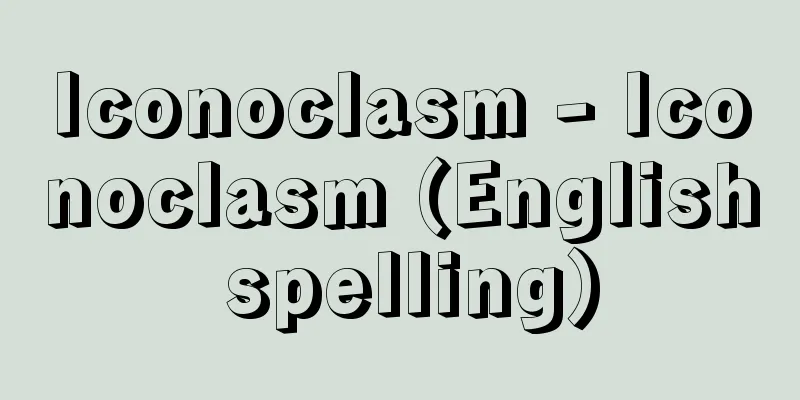Iconoclasm - Iconoclasm (English spelling)

|
Iconoclasm. A social movement that took place in the Byzantine Empire in the 8th and 9th centuries over the issue of icon veneration. The Isaurian Emperor Leo III had long been concerned about the excessive veneration of icons, and, with the advice of some church officials, in 726 he ordered the removal of the Great Icon from the gates of his palace. This was the beginning of Iconoclasm, and at its roots was the anti-Hellenistic sentiment in Asia Minor and Armenia, which did not have the Hellenistic tolerance for image expression. The military, many of whom were from Asia Minor, became the driving force behind this movement. There was strong resistance to the reversal of what had previously been considered holy images to idols, and rebellions broke out in Greece, Sicily, and southern Italy. Leo III implemented Iconoclasm thoroughly with an edict in 730, and converted the Patriarch of Constantinople into an iconoclast. In response to criticism of the Church of Rome, he stripped the Pope of his jurisdiction over the western part of the empire. This was a distant cause of the separation of the Eastern and Western Churches. Constantine V, who succeeded Leo III, provided a theological justification for iconoclasm at the Council of Hierarchs in 754, and began persecuting icon defenders, especially monks, in 762. In that sense, iconoclasm was seen as a struggle against the growing power of monasteries. However, iconoclasm was carried out thoroughly in the eastern part of the empire, centered on the capital, Constantinople, and Asia Minor, but not in Greece, Sicily, the Aegean Islands, or southern Italy, with southern Italy in particular becoming a refuge for icon defenders. Iconoclasm was not practiced in Egypt and Syria, under the rule of the Islamic Caliphate. After the death of Emperor Leo IV, Empress Irene held the Seventh Ecumenical Council in Nicaea in 787, which officially proclaimed the veneration of icons, and the first period of Iconoclasm came to an end. However, the political situation in the empire continued to be in turmoil, and Leo V, who ascended to the throne in 813, could not ignore the wishes of the military and reinstated Iconoclasm. However, the second period did not last long, and there was strong resistance from monasteries, especially the Studios Monastery in the capital. After the death of Emperor Theophilos, Empress Theodora held a synod in 843, which officially proclaimed the restoration of the veneration of icons. Iconoclasm was characterized by the fact that the issue of faith became a social movement led by the emperor, and politically, the relationship between imperial power and the clergy became an issue, while in doctrine, the veneration of icons was established. [Tatsuya Moriyasu] [Reference] |Source: Shogakukan Encyclopedia Nipponica About Encyclopedia Nipponica Information | Legend |
|
聖像破壊運動。イコン崇敬の是非をめぐって、8~9世紀のビザンティン帝国で繰り広げられた社会運動。イサウリア朝の皇帝レオン3世は、かねてイコン崇敬の行き過ぎを憂えていたが、一部の教会関係者の進言もあって、726年、宮殿の門から大イコンの撤去を命じた。これがイコノクラスムの発端で、その底流には、画像表現に対しヘレニズム的寛容さを持ち合わせない小アジア、アルメニア地方の反ヘレニズム感情があった。そして小アジア出身者の多かった軍隊が、この運動の推進者となった。それまで聖像とされていたものを一転して偶像扱いすることには抵抗も強く、ギリシア、シチリア、南イタリアなどでは反乱も起こった。レオン3世は730年の勅令でイコノクラスムを徹底させ、コンスタンティノープル総主教をイコン破壊派に切り換えた。それを批判したローマ教会に対しては、帝国西部におけるローマ教皇の管轄権を取り上げた。これは東西両教会分離の遠因となった。 レオン3世を継いだ息子のコンスタンティノス5世は、754年のヒエリア主教会議でイコノクラスムに神学的根拠を与え、762年よりイコン擁護派、とくに修道士に対する迫害を始めた。その意味でイコノクラスムは、肥大化した修道院勢力に対する闘争の様相をみせた。ただ、イコン破壊が徹底して行われたのは、首都コンスタンティノープルと小アジアを中心とする帝国の東部で、ギリシア、シチリア、エーゲ海諸島、南イタリアなどでは徹底せず、とくに南イタリアはイコン擁護派の避難所となった。イスラム・カリフ王朝支配下のエジプトとシリアでは、イコノクラスムは行われなかった。 皇帝レオン4世の没後、皇妃イレーネが787年ニカイアで第7回公会議を開催し、イコン崇敬を公式に宣言し、第1期のイコノクラスムは終結した。しかし、帝国の政治情勢は混乱を続け、813年に登位したレオン5世は、軍隊の意向を無視できず、ふたたびイコノクラスムが始まった。しかし第2期は長続きせず、首都のストゥディオス修道院を中心とする修道院側の抵抗も強かった。そして皇帝テオフィロスの没後、皇妃テオドラが843年に開いた主教会議で、イコン崇敬の復活が公式に宣言された。イコノクラスムは、信仰の問題が皇帝主導の社会運動になった点が特徴で、政治的には皇帝権と教権の関係が問題となり、教義のうえではイコン崇敬が確立された。 [森安達也] [参照項目] |出典 小学館 日本大百科全書(ニッポニカ)日本大百科全書(ニッポニカ)について 情報 | 凡例 |
<<: Iconostasis (English spelling)
>>: Foreign Diary - Ikoku Nikki
Recommend
Kanuri
...Islam was introduced as early as the 10th and ...
Transient ischemic attack
Definition and Concept According to the 1990 Natio...
Uimamu - Uimamu
A kind of tribute-style trade form when Ainu peop...
Carbon - tanso (English spelling) carbon
It belongs to group 14 of the periodic table and ...
Foot soldiers - Ashigaru-shu
〘 noun 〙 Ashigaru (foot soldiers). Refers to foot ...
Oliphant, L. (English spelling) OliphantL
...The source of this view was E. Kaempfer's ...
German Social Democratic Party
Successor to the Socialist Workers' Party of G...
Liàn dān shù (English spelling)
A technique for producing elixirs using cinnabar a...
Takahiro Matsumae
The lord of Matsumae Domain in the late Edo perio...
Osuga Taneuji - Osuga Taneuji
...A powerful clan in Shimousa in the Middle Ages...
Sarasvati River (English spelling)
It originates in the Siwalik Hills in Sirmul Distr...
Ak-Mechet' (English spelling)
…In the 4th and 3rd centuries BC, it flourished a...
Kitakiss - Kitakiss
...The main production areas are in the Kanto reg...
travertine terrace
...Travertine is a type of calcite crystal formed...
Hyperiidea
...A general term for small crustaceans of the Hy...









